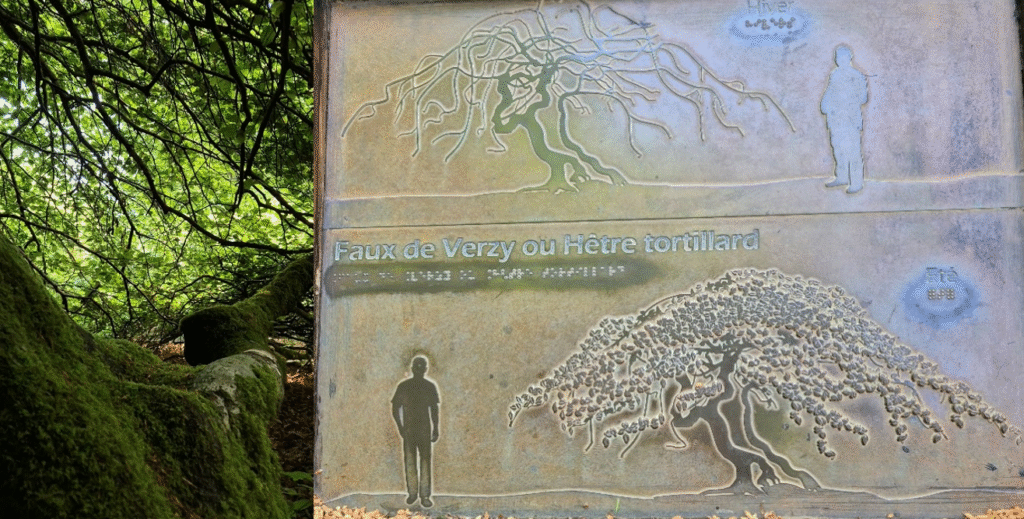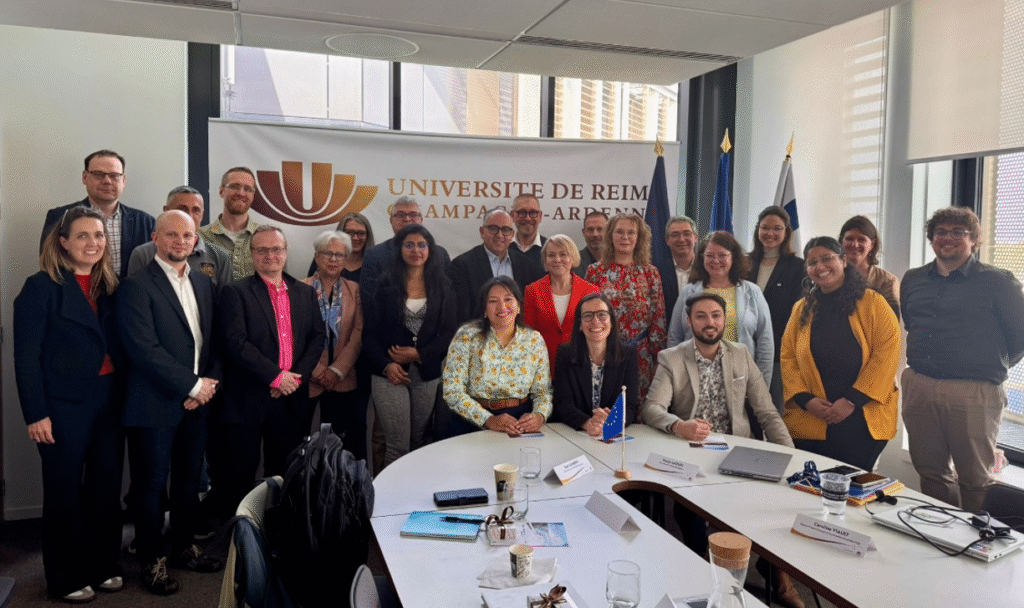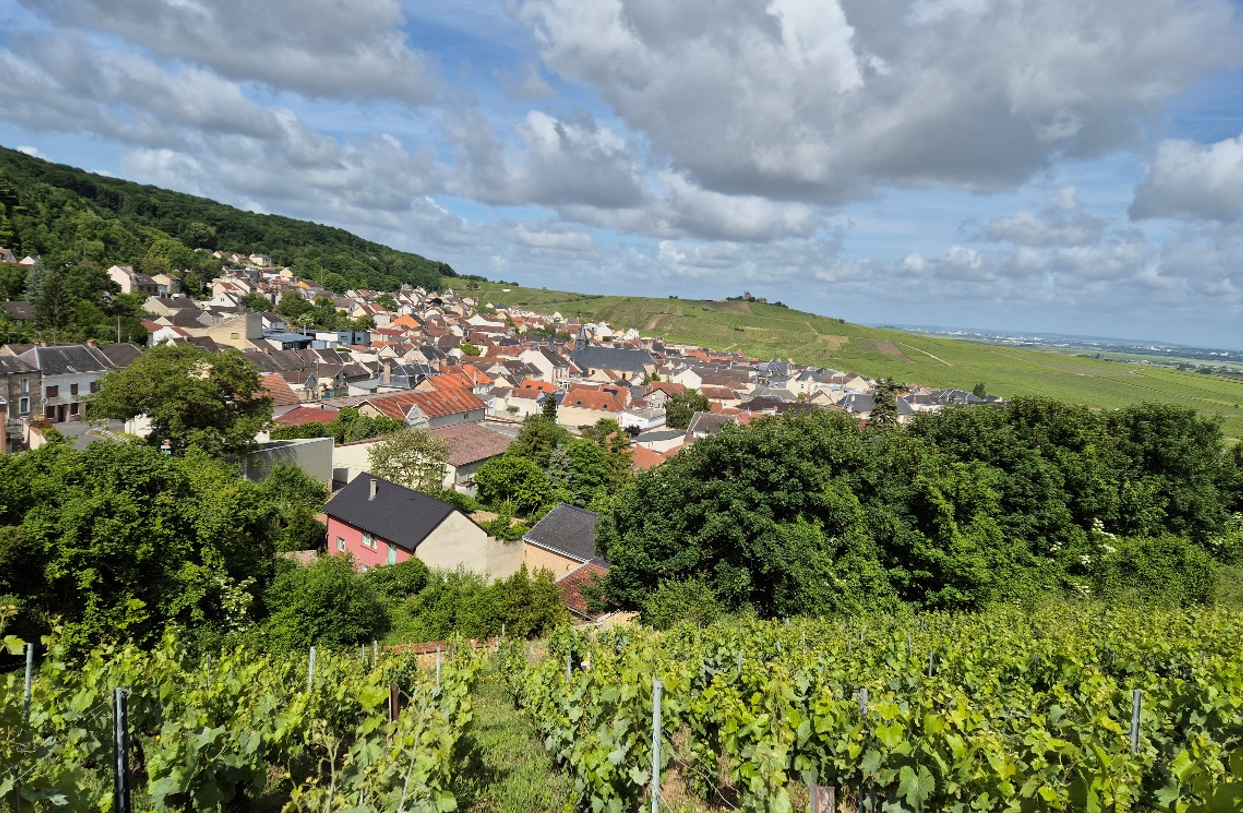In late May 2025, a delegation from Karelia University of Applied Sciences (Karelia UAS) embarked on a journey to Reims, France, to deepen academic and research collaboration with the University of Reims Champagne-Ardenne (URCA). What unfolded was more than a formal exchange; it was a rich, multi-sensory experience that blended nature, science, and shared ambition.
A Forest Full of Questions: The Verzy Encounter
The visit began not in a lecture hall, but under the canopy of the ancient Verzy Forest. Nestled in the Montagne de Reims, this forest is home to one of Europe’s rarest botanical curiosities: the dwarf beech (Fagus sylvatica var. tortuosa). These twisted, contorted trees, known locally as “faux de Verzy”, are found in only a few places in the world, and their origin remains a mystery even to seasoned dendrologists.
As the group wandered through the forest, some tree species were easily identified, while others sparked debate and curiosity. The dwarf beech, with its gnarled limbs and almost mythical appearance, drew particular attention. Unlike the mountain birch (Betula pubescens subsp. czerepanovii), whose adaptation to harsh northern climates is well understood, the dwarf beech’s limited distribution defies easy explanation. Why here? Why only here?
The forest also revealed a rich diversity of other species such as towering beeches and oaks, spiny-leaved hollies (Ilex spp.), american chestnut (Castanea dentata) and conifers like spruce (Picea spp.) and fir (Abies spp.). The group’s informal “fieldwork” turned into a lively exchange of botanical knowledge, with questions flying about needle shapes, cone orientation, and seasonal behavior. It was a reminder that even in an age of AI and data science, the natural world still holds secrets worth exploring.

The forest walk was followed by a visit to a vineyard museum, where the group learned about the labor-intensive process of champagne production. This wasn’t just a cultural excursion; it tied directly into URCA’s research on viticulture and sustainable agriculture. The university collaborates closely with local growers to study everything from drought resistance to pathogen control in grapevines.
A Plenary of Possibilities: Where Strategy Meets Synergy
One of the most pivotal moments of the visit took place in the grand halls of URCA’s headquarters during the plenary session, a gathering that brought together academic leaders, innovation strategists, and research pioneers from both institutions. The atmosphere was charged with anticipation, not just for presentations, but for the potential of what could emerge from this growing alliance.
The session opened with a warm welcome from Essaïd Aït Barka, setting the tone for a day of open dialogue and forward-thinking. Laurent Lucas followed with an overview of URCA’s innovation strategy, highlighting the university’s commitment to academic-driven impact through initiatives like the PUI Innorem innovation hub.
Artificial intelligence took center stage as Bart Lamiroy presented URCA’s AI roadmap, followed by Petri Raivo from Karelia UAS, who shared insights into Karelia’s own AI strategy. The alignment between the two institutions was striking, as both are investing in AI not just as a tool, but as a transformative force across disciplines.
The plenary also spotlighted the INVEST Centre of Excellence, with Hélène Goeury and Essaïd Aït Barka presenting key milestones and strategic goals. Discussions on joint PhD opportunities and collaborative research platforms underscored the ambition to build a truly transnational ecosystem of innovation.
Connecting and involving cities in the INVEST alliance activities: Joensuu and Reims
This session aimed to explore existing collaborations between Karelia UAS and the City of Joensuu, and URCA with the City of Reims. Petri Raivo and Shammi Keya presented Karelia UAS’s cooperation strategy with Joensuu in RDI and education, which sparked a wider discussion, moderated by Liisa Timonen, on strengthening city-university collaboration for greater regional impact. Patricia Durin, Vice-President of Greater Reims Urban Community, expressed strong interest in expanding cooperation beyond current initiatives.

From the presentation of the CMQE (Campus des Métiers et des Qualifications d’Excellence) to the introduction of URCA’s AI and innovation hubs, the plenary session was a convergence of visions. It laid the groundwork for future joint applications, researcher exchanges, and shared infrastructure that could redefine how regional universities collaborate on global challenges.
AI, Analytics, and the Future of Learning
Back on campus, the delegation dove into sessions on artificial intelligence and learning analytics. Karelia’s Tiina Soininen presented the AILA4EDU project, which explores how AI can enhance educational outcomes. URCA shared its own initiatives, including a multinational project on AI in workforce development and the concept of a “MAD-factory”, a hub where AI solution seekers and developers meet. The idea of launching a similar initiative in Joensuu sparked immediate interest.
From Microplastics to Biochar: Tackling Global Challenges
The collaboration extended into environmental science, with discussions on reducing microplastics in fertilizers, biochar applications in agriculture, and even the use of grape waste in sustainable construction materials. These conversations laid the groundwork for joint Horizon Europe proposals and potential student research exchanges.
Building a Sustainable Academic Bridge
In the realm of sustainability management, the two institutions found strong synergies. Karelia’s webinar series could be integrated into URCA’s curriculum, and staff exchanges and joint research initiatives are already in the planning stages. The potential for Erasmus Mundus collaboration and shared Bachelor’s and master’s level offerings was also explored.
Exploring the Atmosphere: AEROLAB and Climate Monitoring
One of the more technically fascinating sessions took place at URCA’s AEROLAB innovation hub, where the Karelia team explored advanced methods for monitoring greenhouse gas emissions. The lab showcased tools and techniques for tracking CO₂, CH₄, and aerosol concentrations using lasers, drones, aircraft, and satellite data. Discussions focused on potential joint research using remote sensing and atmospheric modeling, with possibilities for collaboration through Horizon Europe’s climate calls. The session highlighted how data-driven environmental science can support both academic inquiry and practical climate action.
Looking Ahead: From Strategy to Action
The visit concluded with a forward-looking session on the INVEST Centre of Excellence, where Karelia UAS and URCA reflected on progress and outlined the next steps. While still in its early stages, the Centre holds strong potential to drive joint research, innovation, and education. Participants acknowledged challenges such as tight timelines and the need to adopt new frameworks; they also emphasized the importance of moving forward. Each research cluster was encouraged to identify funding opportunities, initiate joint applications, and deepen collaboration. With projects already underway in AI, sustainability, and microplastics, the Centre is positioned to become a dynamic platform for international impact. This can be stated as- the foundation is in place and now it’s time to build something meaningful together.
Why This Journey Matters
This visit was a blueprint for how regions can work together across borders to build smarter, greener, and more inclusive futures. The Joensuu–Reims connection is growing into something truly transformative. Both organizations expressed their interest in growing together through the power of collaboration, this journey offers a glimpse into what’s possible when we step beyond borders and into shared purpose.
Authors:
Shammi Keya, Marja-Liisa Ruotsalainen, Liisa Timonen, Petri Raivo, Simo Paukkunen, Markus Hirvonen, Tiina Soininen, Heikki Immonen, Lasse Okkonen
Karelia University of Applied Sciences

